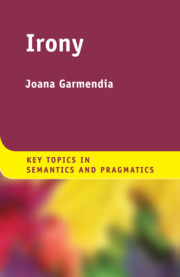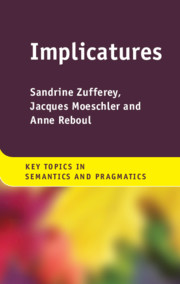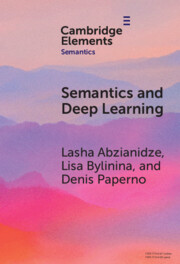Irony
Irony is an intriguing topic, central to the study of meaning in language. This book provides an introduction to the pragmatics of irony. It surveys key work carried out on irony in a range of disciplines such as semantics, pragmatics, philosophy and literary studies, and from a variety of theoretical perspectives including Grice's approach, Sperber and Wilson's echoic account, and Clark and Gerrig's pretense theory. It looks at a number of uses of irony and explores how irony can be misunderstood cross-culturally, before delving into the key debates on the pragmatics of irony: is irony always negative? Why do speakers communicate via irony, and which strategies do they usually employ? How are irony and sarcasm different? Is irony always funny? To answer these questions, basic pragmatic notions are introduced and explained. It includes multiple examples and activities to enable the reader to apply the theoretical frameworks to actual everyday instances of irony.
- Includes a plethora of activities and example that helps to apply theoretical notions to real ironic cases
- Accessibly written, it provides readers with a clear and comprehensive understanding of ironic communication
- Compares the main theories and current discussions of the leading approaches
Product details
September 2020Paperback
9781107465916
178 pages
215 × 140 × 10 mm
0.23kg
Not yet published - available from
Table of Contents
- 1. Introduction
- 2. Irony as opposition
- 3. Irony as echo
- 4. Irony as pretense
- 5. Attitude expression in irony
- 6. Clues of irony
- 7. Sarcasm and humour.






